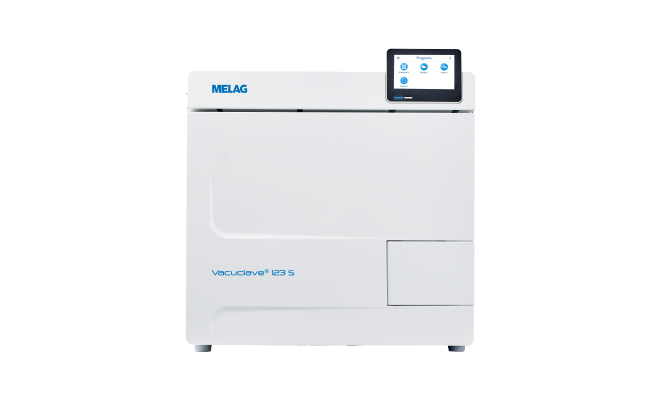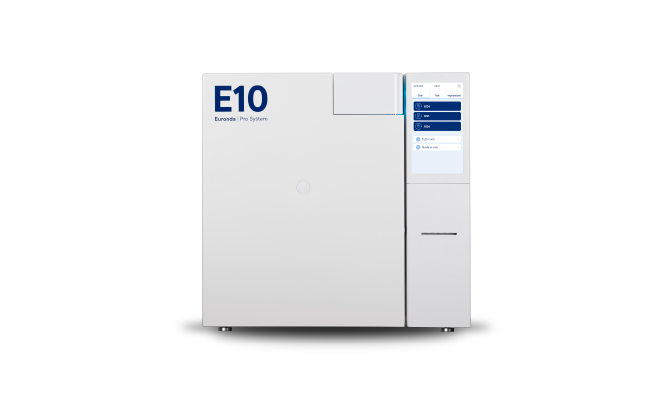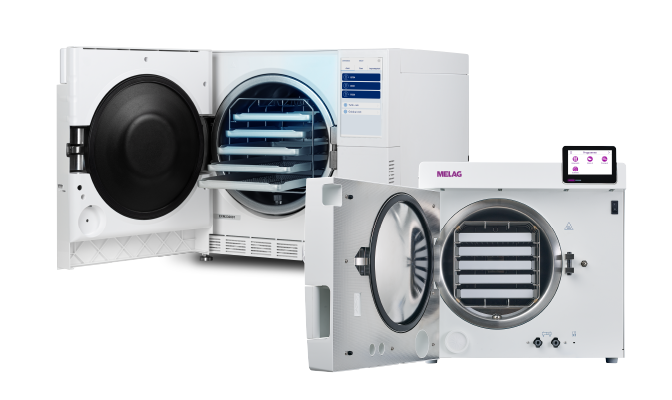When it comes to sterilisation, each Autoclave is tailored to different needs and sectors. Different equipment and environments require different types of sterilisations, which is why Autoclaves are divided into three main classes: Class N, Class S and Class B.
So, what’s the difference between the Autoclave classes? Let’s break it down.
Class N – The Standard Option
Class N Autoclaves are non-vacuum units that stand for ‘naked solid products. These Autoclaves only sterilise unwrapped instruments. They do not sterilise hollow or textile items and wrapped medical items in pouches are not suitable.
Class N Autoclaves work using a process called gravity displacement, in which steam pushes the air out of the chamber without any help from a vacuum pump. As a result, Class N does not guarantee full steam penetration due to the way the steam is introduced inside their chamber.
Without the vacuum pump, this process takes longer and cannot remove 100% of the air inside, compared to other classes of Autoclaves.
Additionally, the drying process is less effective, often leaving instruments damp on arrival, which is not ideal for immediate use or storage.
Who are these recommended for?
Class N Autoclaves are a great choice if you are looking for the cheapest option and don’t need to treat many unwrapped medical items quickly. For small practices, these would be ideal.
Dental Clinics: Sterilising unwrapped dental instruments like probes and mirrors.
Small Clinics: Sterilising simple, unwrapped items.
Tattoo & Beauty: Suitable for sterilising their equipment.
Key Takeaways
Cheapest option for Autoclaves
Only sterilises unwrapped instruments
Uses a process called gravity displacement
Does not guarantee full steam penetration
The Class S Autoclave is an intermediate level steam steriliser, positioned between Class N and Class B Autoclaves. The Class S is designed to sterilise non-porous loads, simple cavities, including wrapped and unwrapped instruments.

Some of these Autoclaves are usually equipped with a combination of gravity displacement and a limited vacuum system, which enhances air removal for certain loads. These Autoclaves allow for the sterilisation of basic packaging and simple cavity instruments. However, they might not be suitable for all types of hollow or wrapped instruments that require more thorough sterilisation. Class S Autoclave performance depends hugely on the specific load type and the autoclave mode.
Who are these recommended for?
Class S Autoclaves are a great middle-ground option. They are ideal for clinics or laboratories that need more flexibility and faster sterilisation cycles than the Class N model provides, but don’t necessarily require top-tier sterilisation power.
Laboratories: Handling a range of sterilisation needs and sterilising unwrapped and wrapped instruments.
Small Clinics: Sterilising solid, unwrapped and wrapped instruments.
Cosmetic and Podiatry Practices: Sterilise tools that do not have areas which are difficult to clean.
Key Takeaways
An option between the two classes
Sterilises basic packaging and simple cavity instruments
Not suitable for complex or highly porous materials
Offer rapid sterilisation cycles
Class B – The Highest-Class/ Advanced Option

Class B Autoclaves are among the most powerful and versatile sterilisers available. Designed to meet the highest hygiene standards and capable of sterilising all types of instruments, including complex, wrapped and hollow items.
Thanks to its technology, Class B Autoclaves can sterilise narrow hollow instruments, such as surgical straight handpieces and promise efficient and safe sterilisation.
This is a result of the Fractionated Vacuum system, which removes air from the sterilisation chamber in several stages. After each stage, steam is injected into the chamber, ensuring that the steam reaches all areas of the instruments, even the hard-to-reach spots, for a deep and effective sterilisation.
Who are these recommended for?
The Class B is the top of the range for Autoclaves, ensuring effective and rapid sterilisation in just minutes. For industries such as Laboratories and Hospitals where sterilisation is top priority, this is the perfect autoclave.
Dental Practices: Sterilisation of their equipment, which often has complex cavities.
Hospitals: Sterilisation of surgical instruments, textiles, and other materials.
Laboratories: Higher safety standards, which means equipment needs to be fully sterilised.
Key Takeaways:
Top class meeting the highest hygiene standards
Capable of sterilising all types of instruments, including complex, wrapped and hollow
Uses a Fractionated Vacuum System, which ensures the steam reaches all areas of the instruments
Conclusion
Choosing the right Autoclave ultimately comes down to understanding your specific sterilisation needs. Whether you’re running a small tattoo studio, working in a hospital environment or a busy dental clinic, there’s an Autoclave class that fits your workflow.
If you’re on a budget but only need to sterilise unwrapped instruments for simple procedures, Class N is your best choice. Class S offers a middle ground between the two classes, giving more flexibility for wrapped (and some unwrapped) tools and basic cavity items. But, if you’re in a high-demand environment where rapid, thorough sterilisation is a non-negotiable, Class B will be your go-to.
Understanding which Class is best suited for you provides you with the best sterilisation for your equipment and environment. Our top recommendation for a Class B Autoclave is the Biobase Class B 23L Benchtop Autoclave
Whether it’s speed, flexibility or budget you’re after – we’ve got you covered. Explore our range today



















